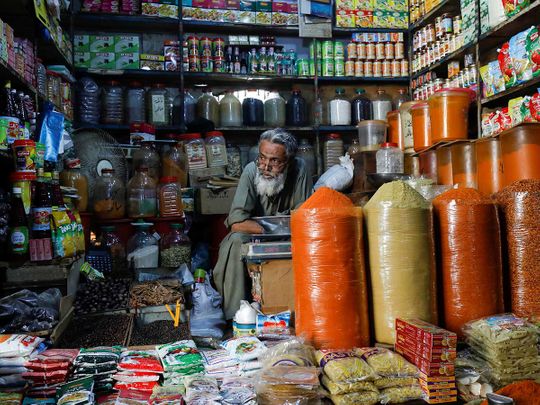
Among different challenges facing the Imran Khan government in Pakistan, none is more persistent and stubborn than the rising cost of living, characterised by increased prices of daily use and official inflation assessments.
The government has spent more time on this politically costly problem that wrecks every other good news that is put out with regard to the economy.
At least a dozen high level meetings have been chaired by the prime minister himself in the past few months, in addition to the constant debate in the federal cabinet about ways and means to control this out-of-the-bottle genie.
Dwindling earnings
Nothing seems to work to the satisfaction of a public that continues to see its earnings dwindle and decline on account of a price index that does not come down.
Part of the problem relates to hoarding and profiteering. There are spurts of artificial shortages in the market forcing the public to chase goods that suddenly go off the counters, only to reappear again with heavier price tags.
More durable commodities that can be stored for longer duration like sugar, wheat and pulses are kept in the hoarding houses and then slowly distributed to make more money.
The government’s crackdowns have not had the desired effect. Not even a nationwide inquiry into what the prime minister calls “mafias hold” has broken the influence of powerful segments of the industry who fleece the people to fill their coffers.
The government’s other response to the shortages is to import these commodities to offset the power of the strong lobbies and boost its own strategic reserves, but that has its own limitations as the fear of a rising import bill and its draining effect on the precious foreign reserves prevents a free import policy.
Not adhering to rate lists
Recently, in the Punjab, where half of the country’s 220 million plus population lives, the ruling party’s chief minister ordered extensive crackdown against small shopkeepers who add to the inflationary pressures by not adhering to the rate lists the government issues.
Hundreds were round up. Millions of fines were imposed. The province’s top bureaucracy was shaken and rebooted under a new boss and strict orders were issued to unsparingly enforce the price control regime.
So far, the outcome offers little to write home about. From the humble vendor, to the mighty industrialist there aren’t many willing to cut the prices and provide relief to the public.
Ironically, the government’s own policies to encourage spending and project driven disbursement of money to revive a lethargic economy itself has generated inflationary impact.
When the real estate sector is fuelled to become the engine of growth then all other sub sectors associated with it face consumption related increase in prices. More demand does not always bring down the prices especially if the supplies are lagging.
Putting the genie back in bottle
Unfortunately, experts are not sanguine that this genie of inflation will be put back in the bottle anytime soon. According to published assessments, more bad news is coming the consumers’ way. These assessments site the global prices trends and forecast a rather depressing picture.
As compared to last year, all key commodities price, integral to the effort to run the economy, have seen sharp rise. Beginning with the dollar-rupee parity, stagnant for a year this has shot up by 10% since May 2021. Importers pay more for imports and pass on the burden to the consumers.
In May 2020 the dollar was at 152.28 to rupee. Now it is at 168.02. Other price indexes make equally problematic readings. Coal price has more than doubled to $153 m tons against last year’s prices. Steel prices are up by 58% to $897 m tons. Cotton prices are up by 46% to $1.04/pound.
Crude oil (Wti) are up by 70% to $68/barrel and crude oil (brent) is up by 73% to $71/barrel. The domestic price matrix too shows corresponding increases: Cotton prices are up by 51% to Rs13500/maund; cement by 20% to Rs676/bag, steel rebar by 51% to Rs179,500 per ton, to quote just a few.
It is evident that Pakistan’s inflation is as much a domestic management issue as it is a consequence of ups and downs in the international market. The ordinary consumer however is not interested in sophisticated insights into the inflation’s hidden drivers.
All they see is that the purchasing power continues to decline and things related to their needs that were once in his reach are becoming expensive. The government does not like this too but for now there is little anyone can do about the problem.
Syed Talat Hussain is a prominent Pakistani journalist and writer. Twitter: @TalatHussain12








